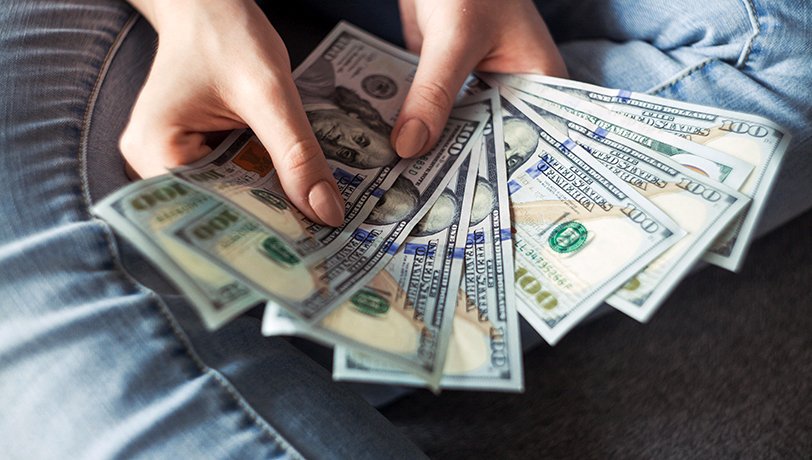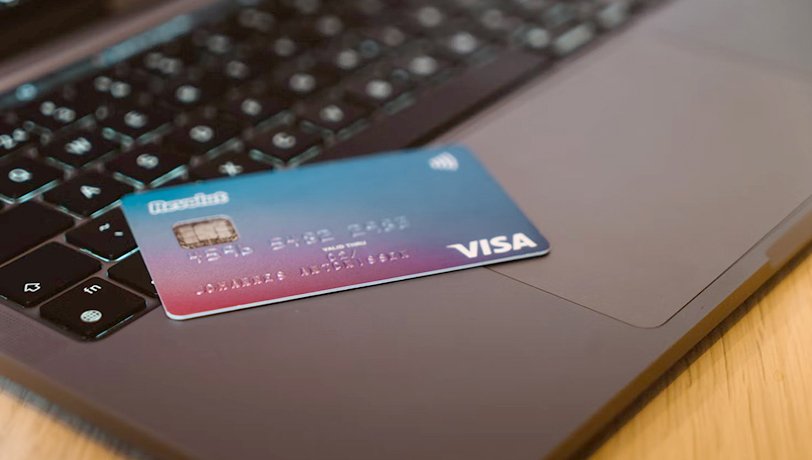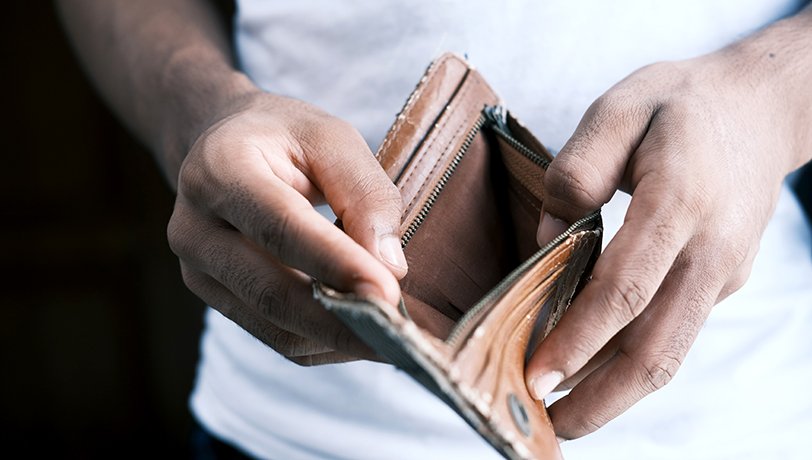Whether it’s a medical emergency, a job loss, or a natural disaster, a financial crisis can happen to anyone at any time. And since 64% of Americans live paycheck to paycheck, one financial emergency can quickly lead to months or even years of debt. The good news is that there are ways to get through a financial crisis without going into debt. Acquiring a fast loan during an emergency is possible for just about anyone. Here are seven suggestions for how to pay your bills and expenses during a tough time:
Table of Contents
Toggle1. Local Nonprofits and Charities
If you’re looking for quick cash in a crisis, local funding sources like nonprofits and charities are a good place to start. Many of these organizations offer one-time financial assistance or have programs that can help with ongoing expenses.
Some may offer grants or interest-free loans, while others may provide food, clothing, or other necessary items. Many nonprofits and charities also offer budget counseling and other financial resources that can help get you back on track. How quickly you can get cash from these organizations varies, but it’s worth checking on as soon as possible.
What Are Local Nonprofits and Charities Best For?
You probably won’t be able to get much assistance towards long-term bills like a mortgage or car payment. You probably won’t find much help for larger bills like rent and medical expenses. However, these organizations can help with more immediate needs like:
- Utilities
- Food
- Transportation
- Clothing
- Childcare
Local resources may also require proof of income in the form of bank statements of paystubs in order to qualify.
How to Find Local Nonprofits and Charities
A good place to start is by searching online or calling your local United Way. You can also search for specific organizations in your area that provide the type of assistance you need. For example, if you’re looking for help with utility bills, you can search for “utility assistance programs near me.”
Another great resource is your local community action agency. These organizations are required to assist low-income individuals and families, so they’re a good place to start if you’re unsure where else to turn. You can find your local community action agency by searching online or calling the National Community Action Partnership.
2. National Nonprofits and Charities
If you can’t find what you need locally, there are also national nonprofits and charities that may be able to help. These organizations tend to have more resources than local ones, but they also tend to be more competitive. That means it may take longer to get approved for assistance. Since many of these organizations operate on a first-come, first-serve basis, it’s important to apply as soon as possible if you need help.
What Are National Nonprofits and Charities Best For?
Like local charities, national ones can help with more immediate needs. If you need assistance with childcare, clothing, and smaller expenses, these organizations may be able to help. You may also find more assistance for long-term bills, like a mortgage or car payment. Competition for these programs is usually high, so you’ll need to act quickly.
How to Find National Nonprofits and Charities
To get started, check out some of the most popular national charities:
- The Salvation Army: Best for help with housing and utilities
- Feeding America: Best for food assistance
- The Red Cross: Best for natural disaster assistance
- St. Vincent de Paul: Best for homeless support
- Catholic Charities USA: Excellent for all kinds of support (e.g. senior services, homeless support, finding jobs, financial literacy, and asset development)
- Goodwill: Best for job seekers (e.g. help with resume writing writing and interviewing)
Like local charities, many of these organizations will require proof of income and assets in order to qualify for assistance. They may also require that you meet certain criteria, like being a veteran or having a disability.
“Even if you have good health insurance through your provider or employer, you may still be on the hook for high deductibles, copayments, and coinsurance. That’s where medical bill assistance programs come in.”
3. Medical Bill Assistance Programs
In America, medical expenses are the leading cause of debt and financial crisis. If you’re struggling to pay your medical bills, there are a few different options for assistance. Even if you have good health insurance through your provider or employer, you may still be on the hook for high deductibles, copayments, and coinsurance.
That’s where medical bill assistance programs come in. The following programs can help with:
- Hospital bills
- Doctor bills
- Dental bills
- Medical equipment
- Prescriptions
There are a few different types of medical bill assistance programs, including:
- Payment plans: Some doctor’s offices and hospitals will allow you to set up a payment plan for your bill. This can help if you’re struggling to pay the full amount all at once.
- Charity care: If you meet certain income criteria, you may qualify for reduced-cost medical care.
- Medical billing advocacy: These services can help you negotiate with your insurance company or medical provider to reduce your bill.
- Medical credit cards: In some cases, medical credit cards available to you will have interest-free periods or low-interest rates.
- Fundraising: If you’re really struggling to pay a medical bill, you can set up a fundraiser on a site like GoFundMe.
Who Are Medical Bill Assistance Programs Best For?
Medical bill assistance programs can be a good option for anyone struggling to pay their medical bills. However, these programs are usually best for people who:
- Have high deductibles
- Owe a lot of money
- Have insurance but still can’t afford their bills
- Don’t qualify for charity care
- Can’t set up a payment plan
How to Find Medical Bill Assistance Programs
The best way to find medical bill assistance programs is to contact your hospital or doctor’s office directly. Many hospitals and doctor’s offices have their own programs to help patients with medical bills. You can also search for national programs online. A few good places to start are:
“Since 64% of Americans live paycheck to paycheck, one financial emergency can quickly lead to months or even years of debt.”
4. Bad-Credit Loans
If you’re an individual with a low FICO score (below 690), you may have trouble getting approved for a loan from a traditional lender like a bank or credit union. Fortunately, a few different types of lenders specialize in loans for people with bad credit. Some of the most common types of bad-credit loans include:
- Payday loans: You can get a payday loan from a physical location or online. With this type of loan, you typically write a check for the amount you’re borrowing plus interest and fees. When your loan comes due, the bank takes the check and cashes it on your next payday.
- Car title loans: A title loan allows you to borrow money against your car. You’ll need to put up your car as collateral for the loan.
- Personal loans: You can apply for a personal loan from a traditional lender like a bank, credit union, or online lender. Personal loans will have higher interest rates for those with bad credit, but they may still be lower than the interest rates on payday and title loans.
These lenders will typically charge very high interest rates compared to banks or credit unions, but they can still be a good option if you need money for an emergency expense. Since the interest rates are extremely high, it is best to get quotes from multiple lenders before signing up for something that might be predatory.
When it comes to how quickly you can get the money, it depends on the lender. Some lenders will send you the money quickly, while others may take a few days to process your loan. Either way, you’ll be able to get approved for one of these loans much faster than a traditional loan.
Who Are Bad-Credit Loans Best For?
Bad-credit loans are generally a good option for those who need quick money for a one-time expense they know they can pay off soon. Examples of this are:
- Medical bills
- Auto repairs
- Home repairs
How to Find Bad-Credit Loans
The best way to find bad-credit loans is by searching online. There are a number of different lenders that offer these types of loans, so it’s important to compare rates and terms before you apply. A few good places to start your search are:
- WorkingCapital
- My Canada Payday
- Bonsai Finance
- BadCreditLoans.com
- LendingTree
5. Credit Cards
If you have good credit, you may be able to use a Credit Card to pay your medical bills. Many cards offer 0% APR for a certain period, giving you some breathing room to pay off your debt. Just make sure you’re aware of the interest rate after the introductory period ends, as it can be quite high, especially if it is your first credit card. Another option is to use a rewards credit card to pay your medical bills. You can then use the points or cash back you earn to offset the cost of your debt. However, if you do this, be sure to pay off your debt in full each month so you don’t incur interest charges on it.
Who Are Credit Cards Best For?
Credit cards are best for those with good credit who need a little extra time to pay off their debt. They can also be a good option if you’re earning rewards that you can use to offset the cost of your medical bills. However, if you need fast cash for your financial crisis, getting a credit card isn’t the type of immediate assistance that you’ll need.
How to Find Credit Cards
You can find credit cards by searching online or contacting your bank or credit card issuer. Once you’ve found a few options, compare the interest rates, fees, and rewards to find the best card for your needs.
Keep in mind that if you have bad credit, you may not be approved for a traditional credit card. In this case, you may want to consider a secured credit card, which requires you to put down a deposit that serves as your credit limit.
6. Lending Circles
Lending circles are a type of peer-to-peer lending. You’ll join a group of people who all contribute money to a fund you can then borrow from. Lending circles are typically used for small loans, and the interest rates are usually lower than what you’d find with other types of loans.
One of the primary benefits of lending circles is that they’re often available to people with bad credit who wouldn’t be able to get a loan from a bank or credit union. However, a drawback to this kind of lending is that you’ll need to wait until the group has collected enough money before you can borrow from the fund. This could take weeks or even months, so it’s not a good option if you need fast cash.
Who Are Lending Circles Best For?
Lending circles are an excellent choice for those who are already contributing members. And joining one is an excellent idea if you think you may need to borrow money in the future.
If you have bad credit and you’re in a financial crisis, this type of lending probably isn’t going to be fast enough to help you. If you aren’t willing to contribute to the fund, you won’t be able to borrow from it either.
How to Find Lending Circles
Community groups typically organize lending circles, so your best bet is to start by asking around. You can also search online for lending circles in your area. Once you’ve found a few options, compare the interest rates and terms to find the best one for your needs.
If you cannot join a lending circle, other options are available. You can try peer-to-peer lending platforms like Prosper or LendingClub. These platforms allow you to apply for a loan and get funded by individual investors.
7. Cash Advance Apps
New FinTech companies that offer cash advance apps are popping up all over the place, and if you have good credit, you may be able to get a cash advance from one of these companies.
The benefit of using a cash advance app is that you can get your money quickly–usually within 24 hours. If you have good credit, you may get a lower interest rate than you would with a traditional loan.
The downside of cash advance apps is that they have very short repayment periods, meaning that failure to pay back your loan could result in high fees and interest rates as well as damaged credit.
Who Are Cash Advance Apps Best For?
Cash advance apps are best for those with good credit who need fast cash, but if you have bad credit, you may not be approved for a loan. If you can’t repay your loan quickly, the fees and interest rates could be very high. When considering a cash advance app, use the same caution you would with bad-credit loans.
How to Find Cash Advance Apps
You can find cash advance apps by searching online or in the app store on your phone. Once you’ve found a few options, compare the interest rates, fees, and terms to find the best one for your needs. A few good places to start are:
- Dave
- Earnin
- Brigit
- Albert
“When companies need to save money or resources, their employees are often the first to go.”
Common Causes of Financial Crises
All kinds of financial crises can leave you scrambling to find the cash you need to keep up with your bills and expenses. Here are some of the most common causes of financial crises:
Job Loss
Especially right now, job loss is a major cause of financial crises. When companies need to save money or resources, their employees are often the first to go. Across technology, retail, and other sectors, many people are currently facing job loss due to budget cuts and fear of an economic downturn.
Since finding a new job can take weeks or months, those who have lost their jobs may need to find other ways to make ends meet in the meantime–especially if they don’t have another source of income.
Reduced Hours or Wages
In addition to job loss, reduced hours or wages can also cause a financial crisis. If you work in an industry that has been affected by the current economic situation, you may have had your hours cut back, or you may be worried that they will be.
The same is true if you’re self-employed. If the business is slow, you may not make as much money as you need to cover your expenses. Either way, reduced hours or wages can make it difficult to pay your bills and meet your financial obligations.
“The average cost of an emergency room visit for an insured individual is $1,082, according to the most recent data. For many, this means making the split-second decision of whether getting the healthcare they need is worth it.”
Medical Emergencies
Whether it’s a medical expense for you, your family, or your pet, unexpected medical bills can quickly cause a financial crisis. Even if you have insurance, deductibles and copays can add up–and sometimes, insurance doesn’t cover everything.
The average cost of an emergency room visit for an insured individual is $1,082, according to the most recent data. For many, this means making the split-second decision of whether getting the healthcare they need is worth it. No one wants to be in a position where they have to choose between their health and their finances. Unfortunately, medical emergencies can and do cause financial crises for many people.
Divorce
Divorce is another common cause of financial crisis. When a couple gets divorced, they often have to sell their home and split their assets and debts. This can lead to one spouse being left with little income and few assets. In addition, child support payments can be a significant financial burden for one parent.
Financial problems can also arise if one spouse is awarded primary custody of the children and the other spouse is ordered to pay child support. If either spouse has a high income, this can result in a large child support payment that the lower-income spouse may be unable to afford.
The stress of divorce can also lead to job loss or reduced hours at work, which can further add to financial problems. You may also be responsible for child support payments if you have children. And if you own a home, you may have to sell it and split the proceeds “No matter how wealthy you are, natural disasters can cause both personal and financial crises.”
Natural Disasters
Depending on where you live, your property is at risk for different natural disasters. For example, Louisiana is susceptible to hurricanes, while California is more likely to experience wildfires and earthquakes. If your home is damaged or destroyed by a natural disaster, you may need to find a place to live while it’s being repaired or
rebuilt–which can be expensive. No matter how wealthy you are, natural disasters can cause both personal and financial crises.
You may also need to replace any lost or damaged belongings in the disaster. If you have to evacuate, you may have to pay for food and lodging while you’re away from home.
Even if your property isn’t damaged, a natural disaster can still cause financial problems. If the disaster damages infrastructure in your area, it may make it difficult or impossible to get to work. If businesses in the area are closed or damaged, it may be difficult to access certain amenities you’re used to.
What’s Next?
No one is immune to a financial crisis, but there are things you can do to prepare for one and minimize the damage it can cause. Start by creating or updating your emergency fund. This will give you a cushion to fall back on if you lose your job or have unexpected expenses. You should save enough money to cover three to six months of living expenses.
You should also create a budget and stick to it. This will help you make the most of your income and make it easier to save money. Finally, make sure you have adequate insurance coverage. This includes health, homeowners, and auto insurance. If you’re not properly insured, a financial crisis can quickly become a personal crisis. By taking the steps to prepare for a financial crisis, you can minimize the damage it can cause. If you do find yourself in the middle of one, you’ll be better equipped to handle it.





